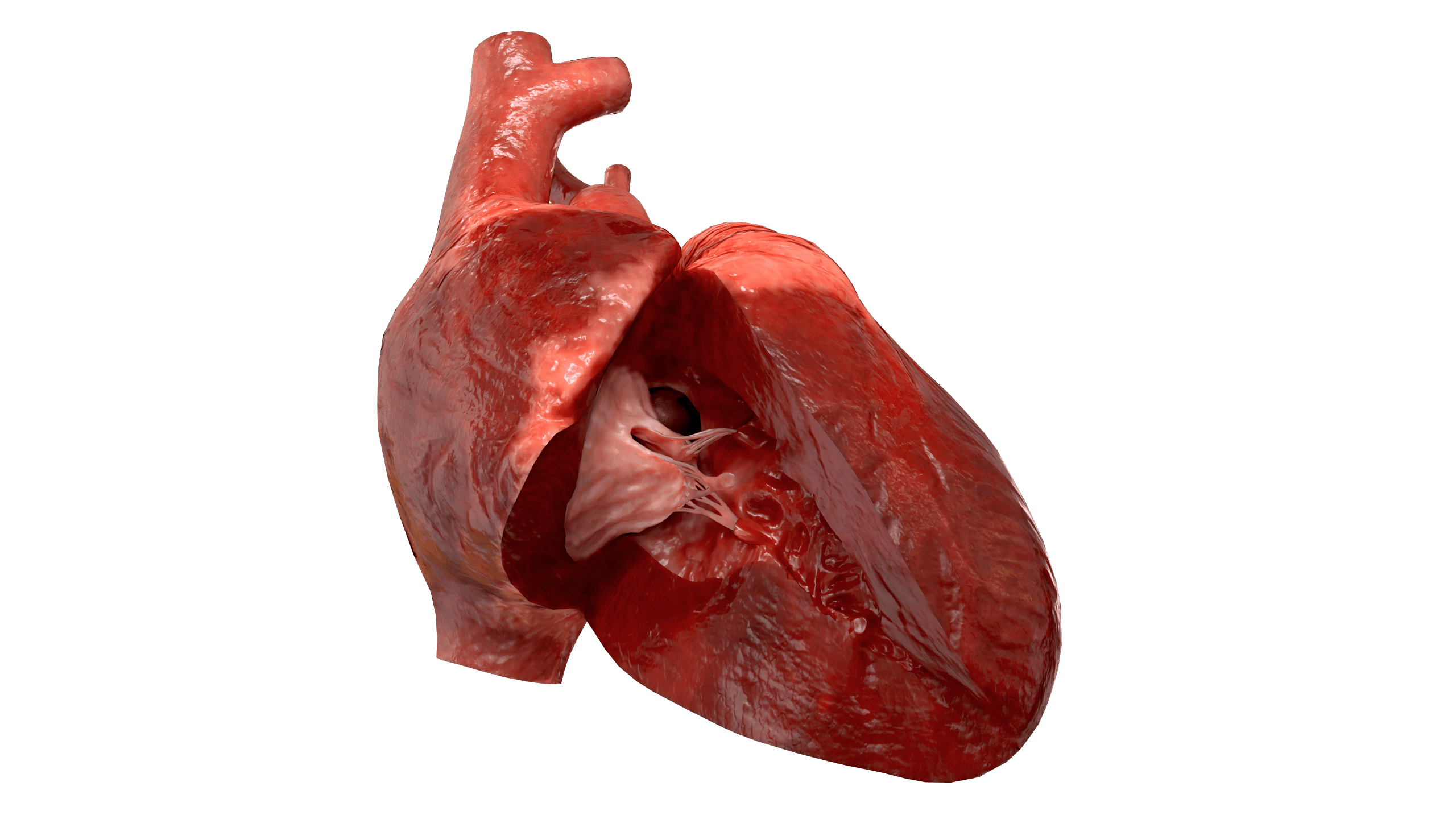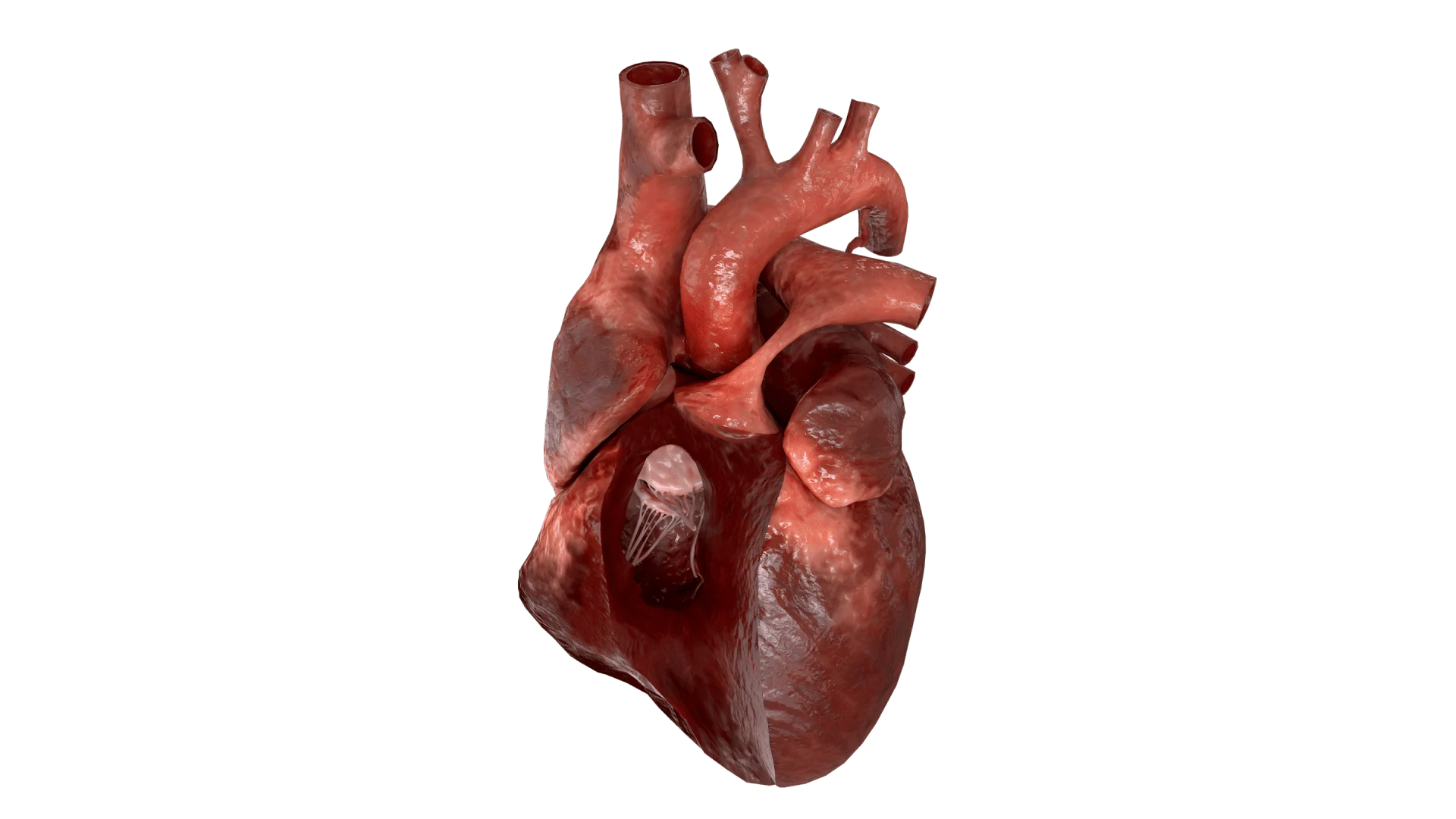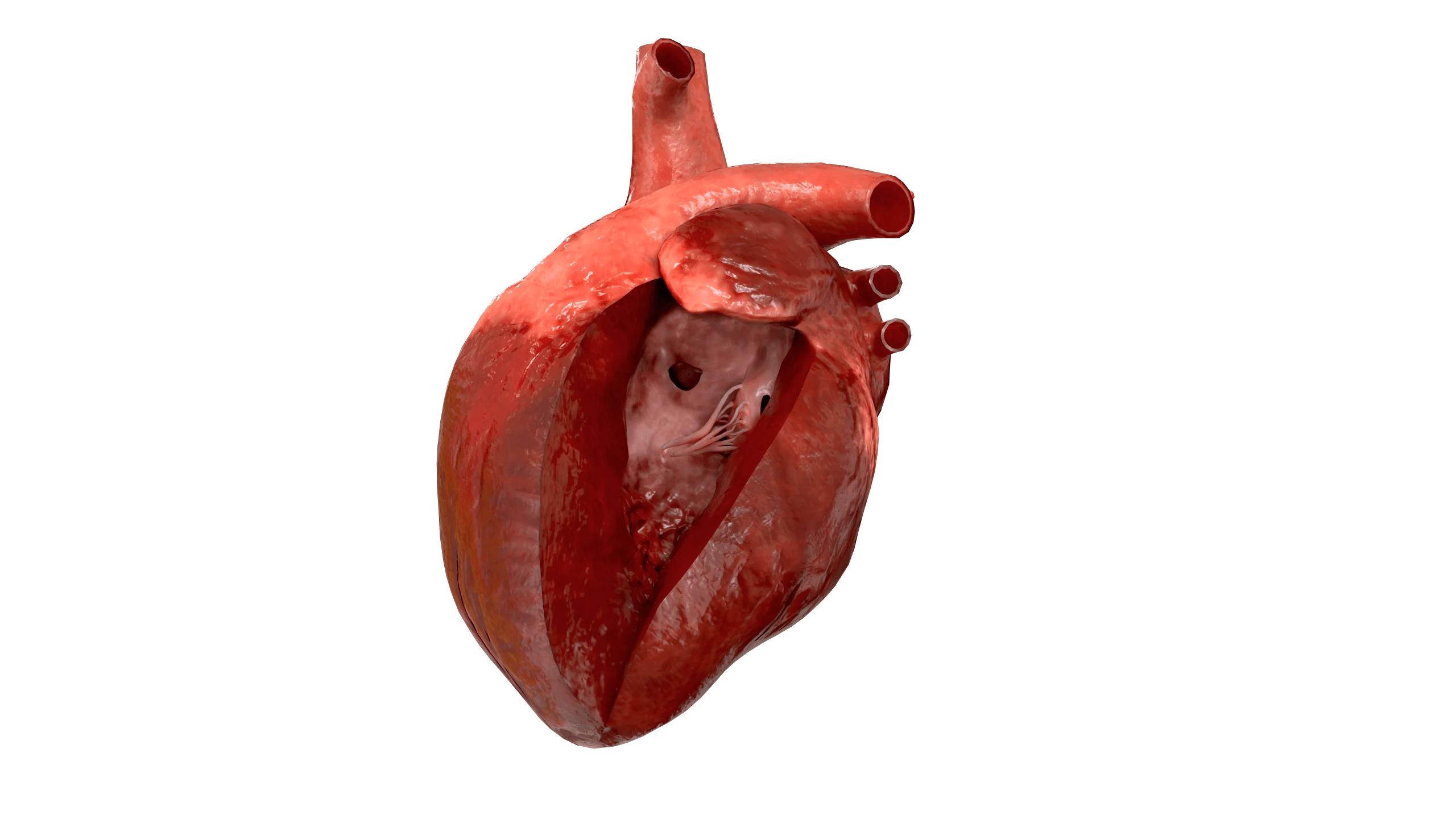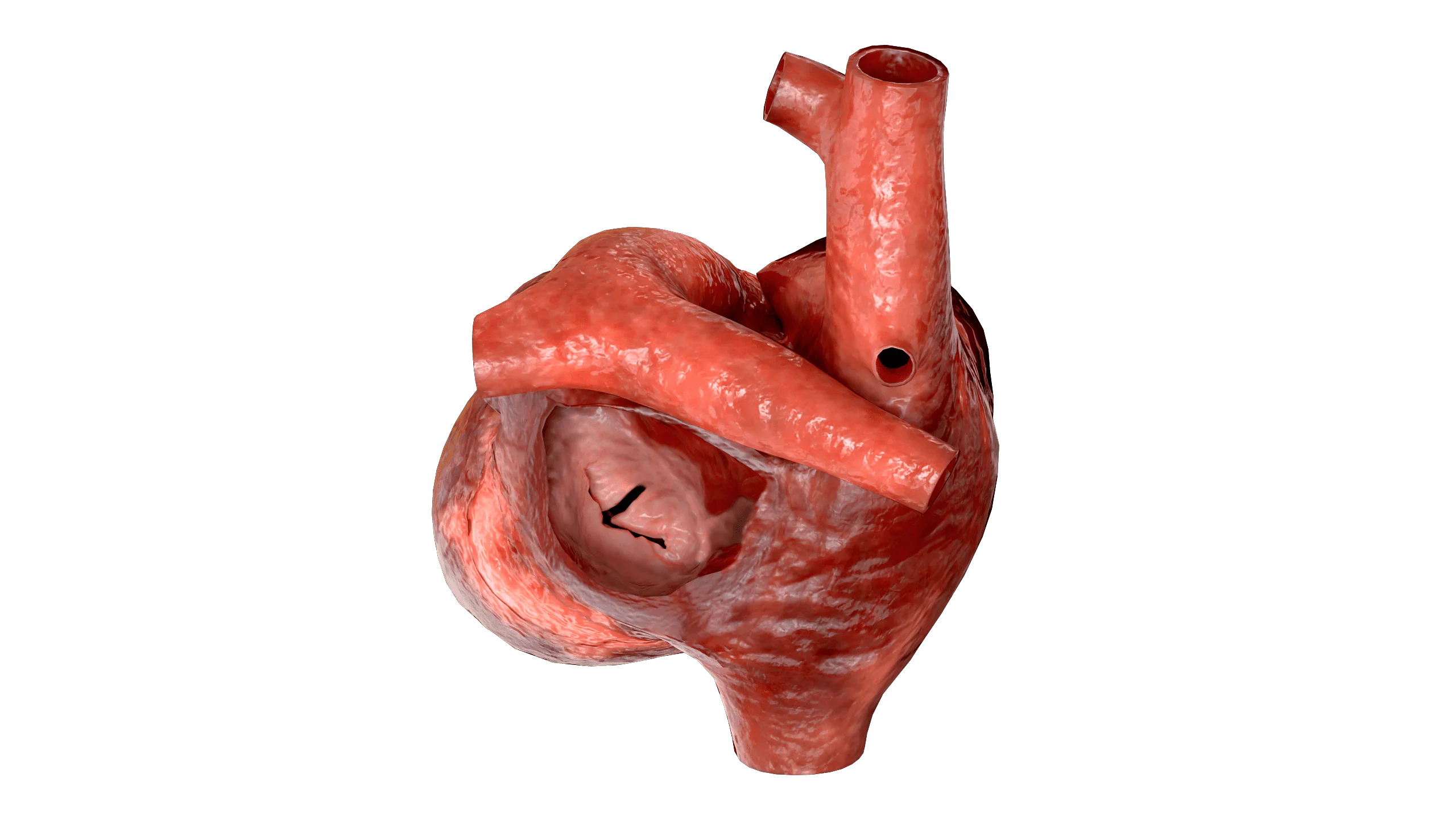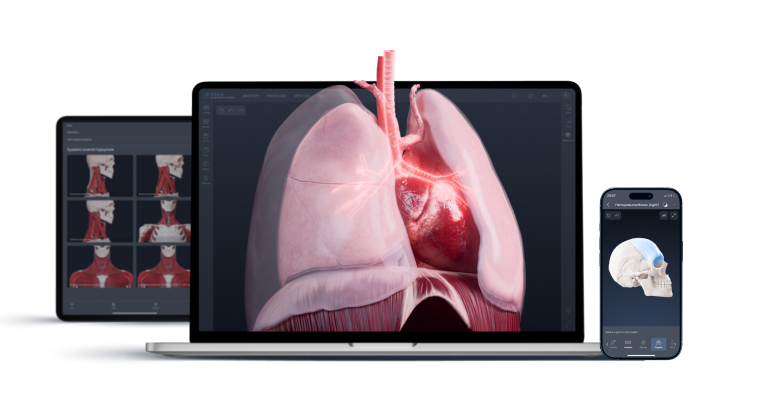Ventricular Septal Defect (VSD) is a congenital heart condition characterized by an abnormal opening in the septum that separates the heart’s lower chambers (the ventricles). This defect allows oxygen-rich blood from the left ventricle to mix with oxygen-poor blood in the right ventricle, leading to increased blood flow to the lungs and the heart working harder than normal. Over time, untreated VSDs can lead to complications such as heart failure, pulmonary hypertension, or arrhythmias. Treatment may involve surgical closure of the defect depending on its size. View how VSD affects the heart in detail through our 3D model.
Show more Show less